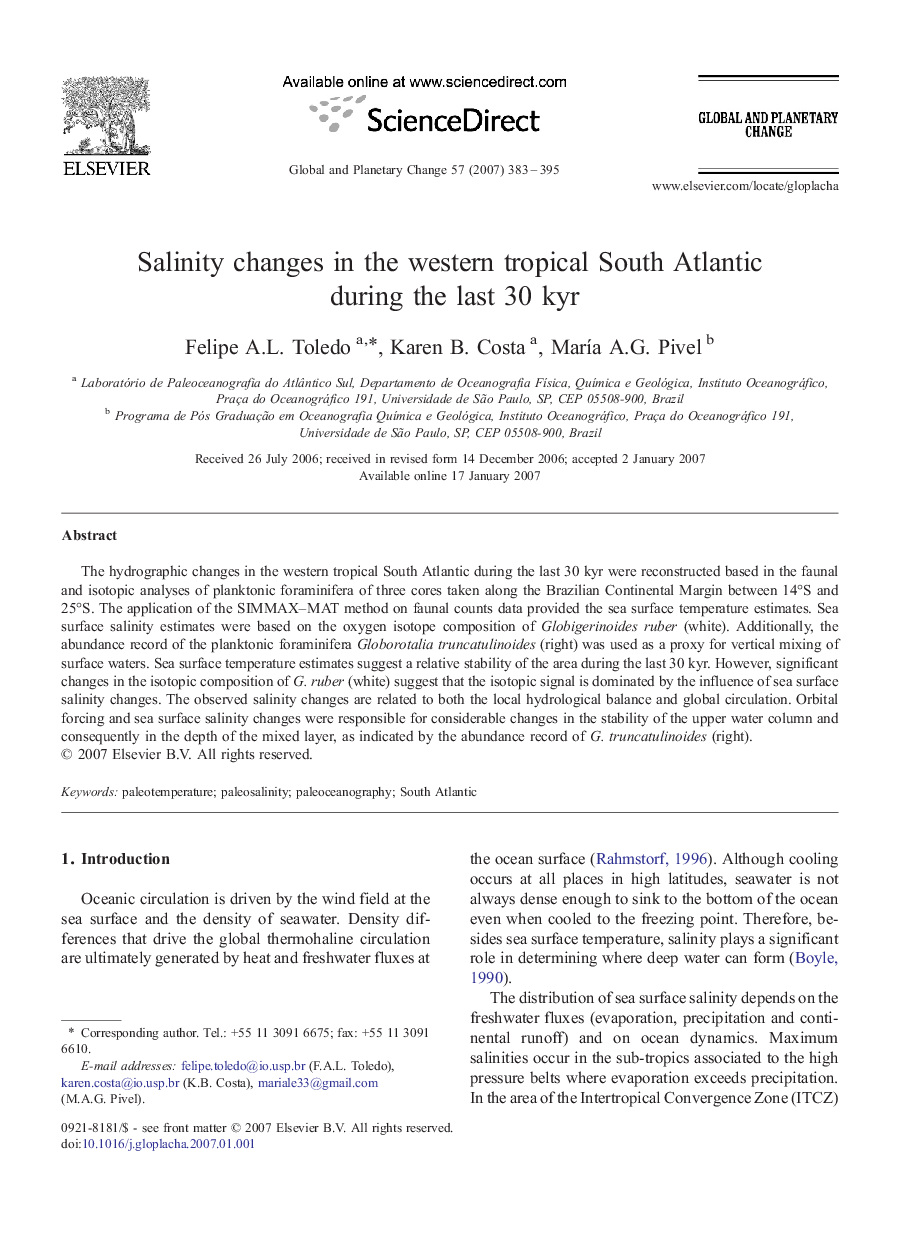| Article ID | Journal | Published Year | Pages | File Type |
|---|---|---|---|---|
| 4464369 | Global and Planetary Change | 2007 | 13 Pages |
The hydrographic changes in the western tropical South Atlantic during the last 30 kyr were reconstructed based in the faunal and isotopic analyses of planktonic foraminifera of three cores taken along the Brazilian Continental Margin between 14°S and 25°S. The application of the SIMMAX–MAT method on faunal counts data provided the sea surface temperature estimates. Sea surface salinity estimates were based on the oxygen isotope composition of Globigerinoides ruber (white). Additionally, the abundance record of the planktonic foraminifera Globorotalia truncatulinoides (right) was used as a proxy for vertical mixing of surface waters. Sea surface temperature estimates suggest a relative stability of the area during the last 30 kyr. However, significant changes in the isotopic composition of G. ruber (white) suggest that the isotopic signal is dominated by the influence of sea surface salinity changes. The observed salinity changes are related to both the local hydrological balance and global circulation. Orbital forcing and sea surface salinity changes were responsible for considerable changes in the stability of the upper water column and consequently in the depth of the mixed layer, as indicated by the abundance record of G. truncatulinoides (right).
